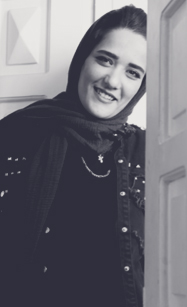

































Project's Concept
These pictures recount my walks on Omar al-Mukhtar street, which I regularly took for more than six months. During this period, I observed the changes and transformations in Gaza due to the pandemic.
This main street is Gaza City’s longest and oldest, connecting the eastern and western parts of the city and with a rich history of past victories and defeats.
The intermittent closures witnessed there tell a new story. For example, what was once bustling suddenly came to a peculiar standstill, reflecting our fears or what was to come. The streets previously filled with chairs and sidewalk discussion were suddenly empty. The only thing left there was an empty chair, out of place. There were no longer people discussing what the city endured, through thick and thin.
The slogans on the walls also looked different. In the past, drawings of the faces and statements of our popular leaders, freedom fighters and the Palestinian national movement manifested. But today, the walls are decorated with “new faces” circulating globally.
The oldest and mightiest gates of the city had shut down while the long history of writings from the First and Second Intifada proceeded. The text, written on the gates, expressed refusal, discontentment and retaliation, written one on top of the other and in different colours. These gates, which used to display the pictures of several martyrs, now hold posters whose significance is ambiguous to us.
The pandemic will not pass over the barricades spread along Gaza’s streets, but will inevitably clash with the strength of the people who will confront it as they did the previous challenges. The people transformed the barricades into sitting areas and tables for displaying their goods. They even used it at times to play games.
How will all these aspects look when the pandemic finally disappears from our world?

Rehaf Batniji is a self-taught photographer and visual artist from Gaza City, Palestine, who has participated in multiple international and local exhibitions.
Batniji was recently part of the FilepaManuela art residency in Madrid. She also digitally presented her work at Slidefest Palestine as a part of the Gulf Photo Plus Festival, Dubai, in February 2022.
Her first solo exhibition was held in the backyard of her own house in 2020.
She has worked previously with multiple organizations like Riwaq, UNESCO, the Red Cross, the A.M. Qattan Foundation, Oxfam International and the Goethe Institute.
Batniji has also published her photographs in many international publications such as Vogue and the French newspaper La Monde Diplomatique.
She uses painting to express her ideas of night, war and music.
Batniji now works as a photography trainer at NAWA for Culture and Arts Organization.
In her photography, she shows a huge interest in the streets, as she considers them an introduction to different cultures and identities that exist in her city. She feels that the streets can represent both dark and light sides of a society’s culture and believes that photography has the same ability.
Batniji, who is of Palestinian descent, has lived through four wars in Gaza. Her work is filled with social objectives in a refreshing positive light as she refuses to photograph the monstrous side of the conflicts, using it as a form of revolution to reflect life in Gaza.
Batniji has developed a unique visual language through intimately observing nature’s relationship with the people who exist in it.